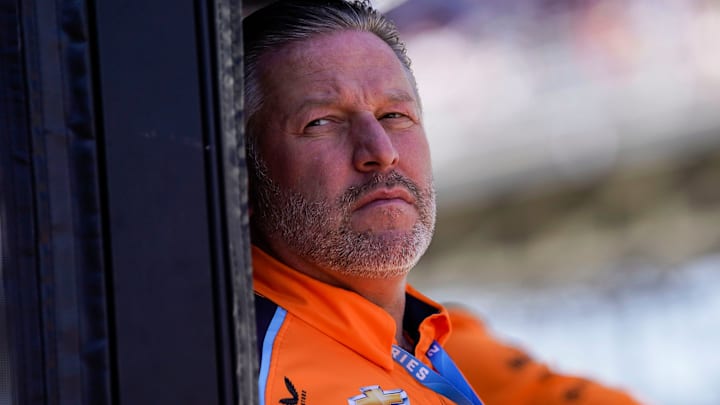Zak Brown Reveals Game-Changing Ideas for IndyCar’s New Era with FOX Sports

With the IndyCar Series finale at Nashville Superspeedway this weekend. It signifies the conclusion of NBC Sports' tenure as the exclusive broadcaster of North America's leading open-wheel racing championship since 2019, a relationship that spans nearly two decades within the network family.
Next year IndyCar will be embarking on a new chapter alongside FOX Sports starting in 2025, McLaren Racing's CEO Zak Brown has proposed several innovative concepts aimed at enriching the viewing experience.
The transition to FOX Sports is promising for several reasons, including that each round next year will be broadcast on the main network, and the majority of Indy NXT rounds will be aired on FS1.
Eric Shanks, the CEO of FOX Sports, is described by Brown as being "very passionate about IndyCar." Interestingly, there's a history of familiarity between them; about 20 years ago, when Shanks was at the helm of DirecTV, he was a client of Brown's before taking on his current role managing McLaren's operations, which include Formula 1 and IndyCar, among others.
“I’d like to see a lot more data,” Brown told Motorsport.com. “I think the Formula 1 broadcast is pretty awesome and a lot of that was driven by David Hill, who used to be the boss at FOX, who Eric Shanks worked with for a long time. I wouldn’t want to say that Eric has called him a mentor because I’ve never heard him say that, but I suspect he is a bit of because David was before Eric.
“So, if a starting point is you look at an F1 broadcast, I think we need to be there. What do I mean by that? I think the way they use sectors makes it easier to understand what’s going on. I think the way they do tires."
Brown expressed that the distinctions between the red sidewall (softer alternate tires) and black sidewall (harder primary compound) have not been clearly communicated regarding their impact.
“You know, I constantly hear over here, red and blacks,” Brown continued. “Talk to me in lap time. Talk to me in reds are going to go off in 10 laps and the blacks are gonna go 20 laps; tell me what that means as a viewer, not just that they are on reds or on blacks. And then Formula 1 does the forecasting of, ‘He’s gonna catch this driver in six laps — the overcut/undercut. So, all that content. Otherwise, you kind of watch a race and it’s a bit, ‘He’s on reds, he’s on blacks.’ Tell me what that means; reds gonna catch him in five laps, but if he doesn’t the tires are going to start falling off after six laps. Like, what does that mean? I know what that means, but I don’t think the common viewer knows what that means, so I’d like to see a lot more technology, strategy - which you see in a Formula 1 broadcast.”
And one of the other elements to explore improving is the broadcast window.
“The length is better (in F1),” Brown said. “Too often it’s like we’re running late because we’ve had too many yellows, so the interview with the winner is like bang and then you’re over. You know, drivers are the stars. Don’t cram an hour and 59 minutes of content in two hours because the minute you’re a minute late, you’re not finishing the story. So, the fact it’s been expanded, I think, is great, so you can have a little bit more pregame/postgame build up and get to know the drivers; not be so rushed. So, I think if you start there, you’ll have a lot better television product.”
